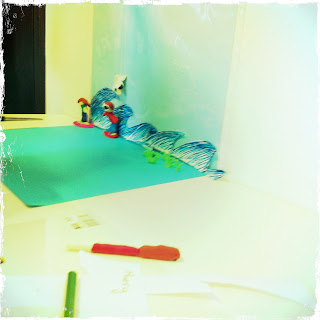MDC Volunteer Lauren.D. reports on her work placement at DPI Queencliff...
As part of my university studies at Deakin University the unit Professional Practice requires the completion of 80hrs of work experience. I decided to undertake this placement at Queenscliff’s Department of Primary Industries in the Aquaculture department as I am very interested in this industry. Also, I was familiar with the area, projects and staff due to volunteering at the Marine Discovery Centre. This gave me a foot in the door to secure a work experience placement.
 |
| Oysters in general anthesitic to relax the mussel allowing extraction of the larvae by gently squirting water inside tehe shell |
So far I am loving placement. I have gained huge amounts of industry knowledge and have met many interesting people. Two projects that I have participated in include the abalone offshore trials and the oyster hatchery. Last Wednesday we induced spawning in the oysters. This was achieved by anaesthetising the oysters to extract larvae. In the end we obtained around 11 million larvae. It was amazing to be a part of and very interesting! I have also learnt huge amounts on the very successful mussel hatchery. I would definitely recommend the aquaculture department to others wishing to take part in placement – it’s awesome!
 |
| Larvae caught in the grading seives, the larve is the black - gray material |
 |
| Once the larvae had been graded we placed them into these tanks according to there developmental stage and began feeding algae |




























